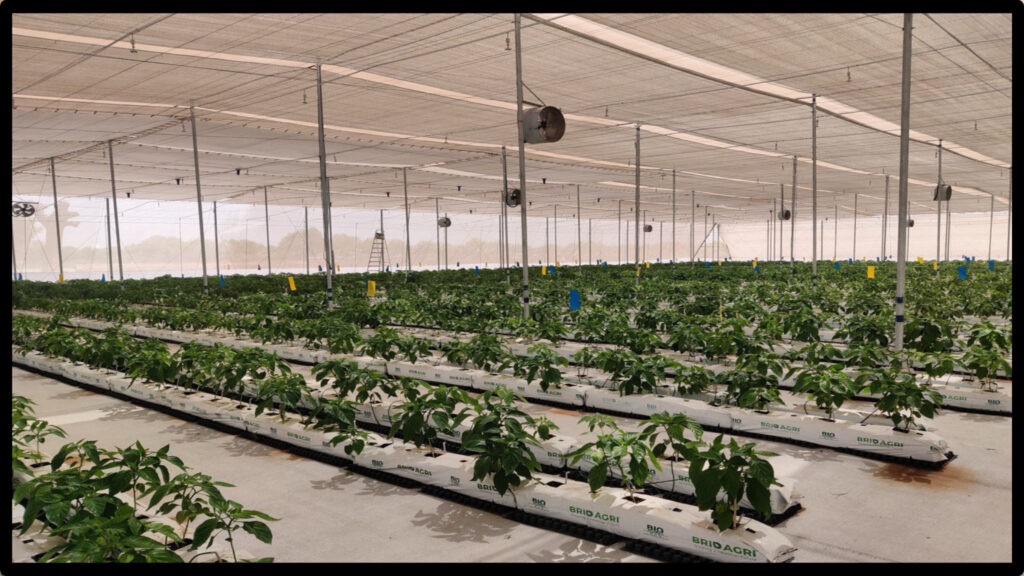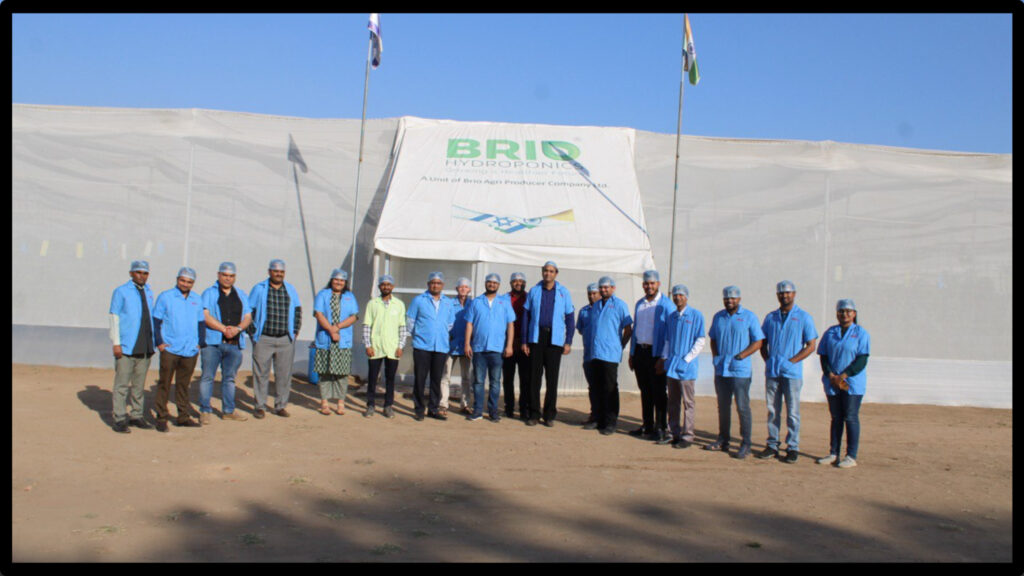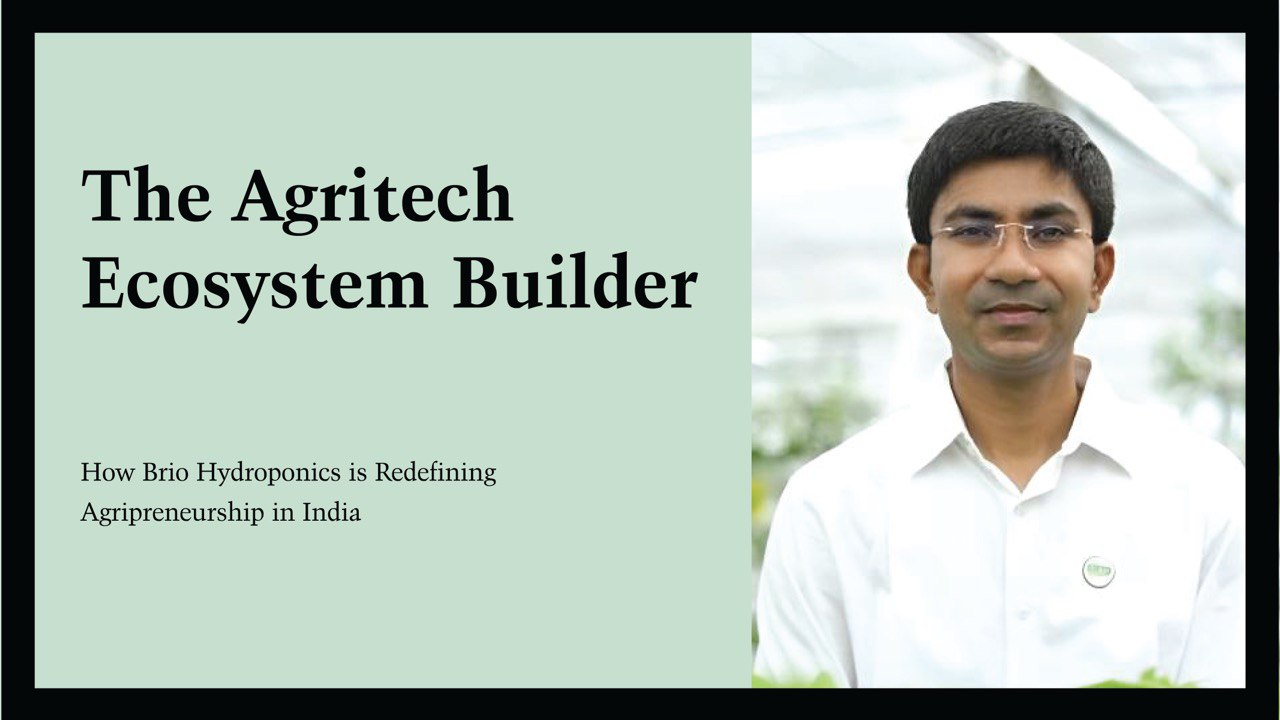Fourteen years ago, when most farmers were using traditional methods for farming and praying for rain, a young entrepreneur from Gujarat was developing an unconventional method- one where farming didn’t need soil at all. What started as a mere experiment evolved into an ecosystem of high-tech agriculture in Gujarat. Now, Agripreneurship in India is being reframed as a business sector like any other, where professional management, capital, and innovative thinking matter more than traditional farming knowledge.
The world often advises us that patience and caution are always rewarded. On the contrary, Pravin Patel, founder of Brio Hydroponics, advocates rapid experiments and quick failures.
He says, “Be quick to fail, it’s easier to become successful this way”.
This philosophy led to the development of India’s first commercially viable controlled environment agriculture facility for hydroponic farming. But the technology they use isn’t the most amazing part of this story. It’s the multi-layered business model that caters to all kinds of consumers and investors across India that sets them apart.
Building an Agritech Business Model:
Brio Hydroponics operates across multiple verticals: consultation, training, funding, investment, and project execution. This structure bridges the gap between technology availability and practical implementation. They don’t just sell technology; they also ensure clients understand the entire operational setup.
Now the most important question arises- if not soil, what kind of growth medium do they use? They use coconut coir or perlite as growth mediums, nutrients diluted in water, and vertical tower systems for vine crops. Brio also has an automation room to monitor temperature, pH levels, oxygen, and electrolytes with accuracy. Nutrient delivery is managed through drip irrigation systems, while both leaf temperature and humidity are carefully controlled. Their growth systems include flat-bed NFT, Dutch bucket systems, and vertical tower systems.

Creating a Skilled Workforce:
One of Pravin Patel’s early challenges was finding knowledgeable agronomists in India. While the technology existed, there was a shortage of trained agronomists for hydroponic farming. Instead of waiting for trained students, Brio established its own training academy. They recruit graduates with BSc and MSc degrees in agriculture, provide hands-on experience in commercial operations, and either hire them or certify them for the broader market. This approach has dual benefits: it solves employment challenges while simultaneously building a trained workforce.
Investment Models in Detail:
The most interesting aspect of Brio’s investment model is how it reconfigures the need for land ownership, agricultural knowledge and capital investment. Brio Hydroponics has effectively found a way to unbundle these requirements. Currently, they are expanding through Unnati Park near Talod, which spans over 100 acres and represents India’s largest managed hydroponic farm complex. The investment structure solves a fundamental mismatch in the Indian agricultural ecosystem: farmers generally can’t afford large investments, and people with capital don’t know how to run farms. Brio prides itself on onboarding clients like Adani, Divya Bhaskar, and Welspun.
The park offers two types of investment models. The first is a lease agreement, where land is subleased to investors, and Brio Hydroponics manages everything from crop growth to operations. The second is a franchise-owned, company-operated model. In this case, investors own the farm, and Brio helps build, install, and manage everything from cultivation to selling. This model is ideal for individuals with capital and land but no agricultural knowledge. They can step in as investors while outsourcing the operational expertise. There’s also a management agreement where investors provide their own land and Brio handles all operations for 30% of net profits. Notably, Brio Hydroponics doesn’t share profits until investors recover their initial investment.
In addition, Brio Hydroponics offers on-site support for independent farmers attempting hydroponic cultivation on their own land, creating a middle ground between full Do It Yourself and complete outsourcing. Even for entrepreneurs, they run orientation programs. As Pravin Patel emphasises, “This is not a sales pitch; we are training people to take care of a hydroponic farm.”
Starting at an investment of ₹59 lakhs for half an acre, the operation grows lettuce, bell peppers, tomatoes and other vegetables through 6-8 annual cycles. Investors also receive a comprehensive dashboard showing projected harvest and operations data.
The Domestic Model:
Brio Hydroponics has developed a domestic model starting at ₹2 lakhs after recognising that not everyone has substantial investment capital. Whether as a hobby or growing chemical-free food, users can cultivate over 50 varieties of leafy vegetables. The domestic model comes with light and fan warranties and a QR code with all the instructions. It has gained recognition both nationally and internationally.
This consumer product line serves multiple purposes. It generates revenue from a completely different customer segment. It builds brand awareness among households who might later consider larger investments. And it creates a network of micro-producers who reduce their dependency on market vegetables while potentially developing supplemental income streams.

The pricing strategy is interesting-₹2 lakhs is a substantial amount for a home gardening system, but it’s positioned as an investment that yields cost savings and health benefits rather than a hobby purchase.
The Distribution Difficulty:
Selling hydroponically grown vegetables comes with unique marketing challenges. For both B2B and B2C clients, Brio has implemented different strategies. To answer the inevitable question, “How can vegetables grown without soil be nutritious or safe?” they establish distinct categories on online platforms that are specifically labelled as “hydroponically grown,” catering to direct consumers.
On the contrary, B2B clients-such as eateries, hotels, and retailers-hardly ever voice these kinds of concerns. This two-tier marketing strategy ensures that while commercial buyers are making only operational decisions, consumer education is essential for direct sales.
The Financial Ecosystem: Debt and Equity Options:
Brio Hydroponics offers financial investment opportunities through fixed-return debt plans, in addition to operational involvement. For investors who wish to gain exposure to agriculture without taking on any operational responsibilities, this opens up entry points. From ₹2 lakh home systems to ₹59 lakh farm projects, Brio’s layered structure demonstrates that scale means market penetration across wealth and engagement levels rather than simply increasing product sales.
The Most Important Question: How to Be a Good Agripreneur?
It’s instructive to read Pravin Patel’s words to prospective agricultural entrepreneurs: “An agricultural background is not required. This argument will resonate differently depending on perspective. For some, it’s agricultural democratisation, making farming accessible to entrepreneurs, investors, and urban professionals who wouldn’t otherwise participate. Others may perceive it as the industrialisation of what has historically been India’s most intimate, family-run sector.”
The Implications for Indian Agriculture:
Brio’s model reflects broader trends in Indian agripreneurship: the separation of land ownership from farming operations, the professionalisation of agricultural management, and the development of investment vehicles that view farming as a business opportunity rather than a way of life.
In a country facing water scarcity, unpredictable weather patterns, and growing demand for pesticide-free produce, the technical solution might be controlled environment agriculture. But the business innovation lies in making that solution accessible across radically different customer segments. That’s not just agriculture. That’s ecosystem building.
What’s your take on the progress of agripreneurship in Gujarat? Subscribe to Gujpreneur to discover more stories of Gujarati entrepreneurs who dared to think differently.







